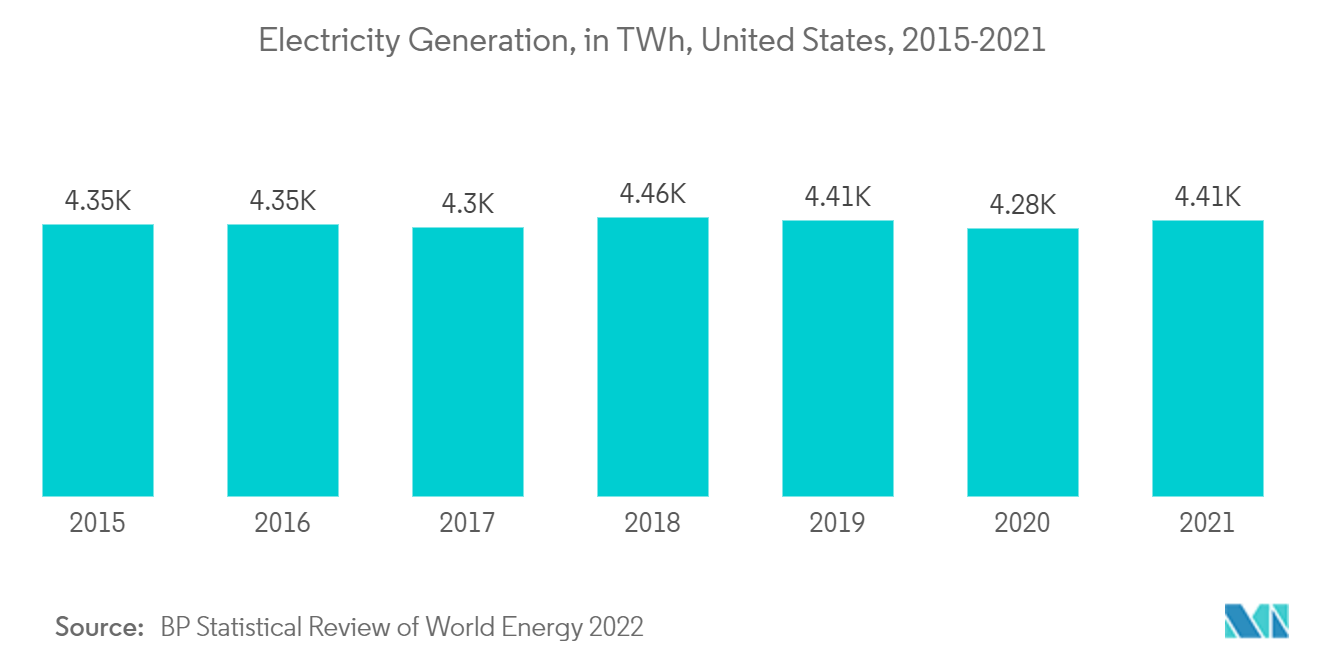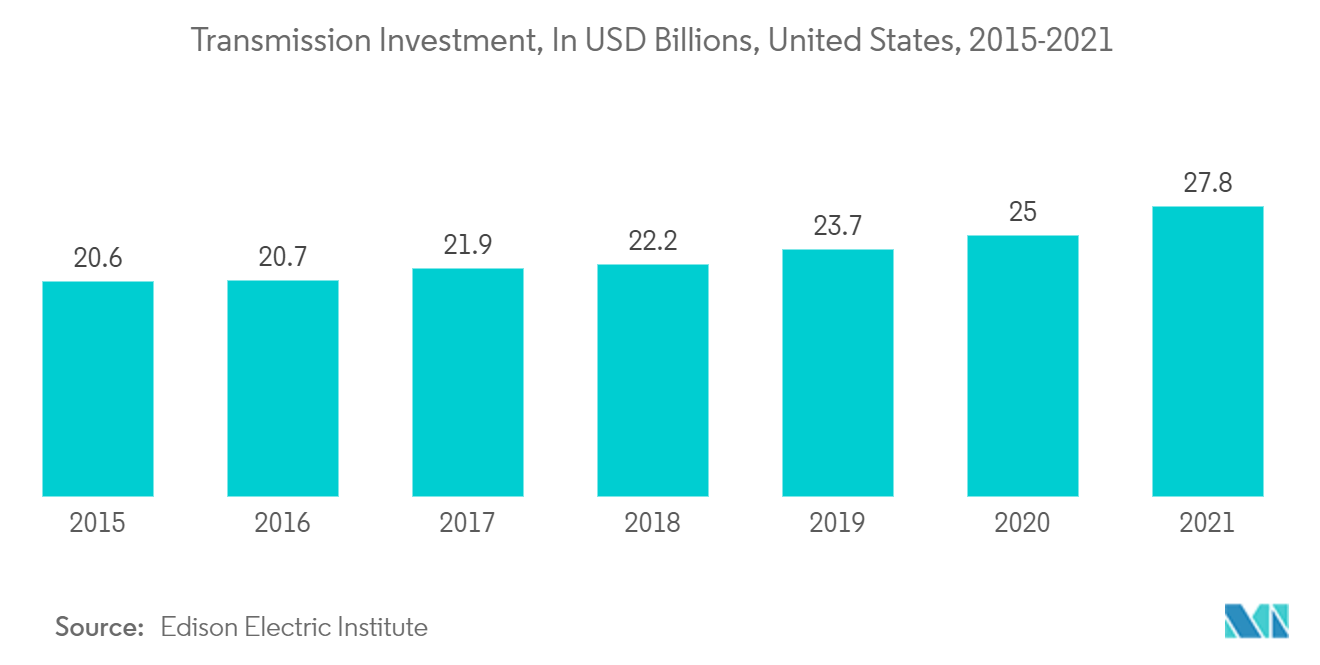Market Trends of United States Large Power Transformer Industry
This section covers the major market trends shaping the US Large Power Transformer Market according to our research experts:
Power Generation Segment to Dominate the Market
- There has been an increase in the number of industries, business expansions, and the development of the service sector, resulting in a growth in power demand year over year. According to the US Energy Information Administration, 27.3 gigawatts (GW) of natural gas-fired capacity is scheduled to come online between 2022 and 2025, which would increase the current capacity (489.1 GW) by 6%.
- As of 2021, the electricity generation in the United States is 4,406.4 TWh, an increase of 2.8% over 4,284.8 TWh in 2020. As U.S. electricity generation has changed over time, especially in recent years, natural gas and renewable energy sources have accounted for an increasing share of U.S. electricity production.
- The share of natural gas-fired electricity installed capacity increased from 17% in 1990 to 43% in 2021, and electricity generation has increased more than tripled from 12% in 1990 to 38% in 2021.
- In the United States, wind energy's share of total utility-scale electricity generating capacity increased from 0.2% in 1990 to about 12% by 2021, and its share of total utility-scale electricity generation increased from less than 1% to about 9%.
- According to the U.S. Energy Information Administration, the share of renewables in U.S. electricity generation is expected to grow from 21% in 2020 to 42% in 2050. Wind and solar generation make up most of that growth. In 2021, the U.S. electric power sector added 13 gigawatts (GW) of utility-scale solar photovoltaic (PV) capacity. There is going to be 20 GW of solar capacity added in 2022 and 24 GW in 2023, generating 31 billion kWh of electric power in 2022 and 41 billion kWh in 2023, respectively.
- In October 2021, the U.S. Department of Agriculture announced that they are investing USD 464 million to build or improve renewable energy infrastructure and to help rural communities, agricultural producers and businesses lower energy costs in 48 states and Puerto Rico.
- During the transmission and storage of electricity generated with renewable energy sources, transformers play a critical role, i.e., between 33 kilovolts and 275 kV, which is accomplished by large power transformers with a 120 megavolt-ampere rating.
- In view of these factors, the usage large power transformers in the power genration are expected to dominate the market during the forecast period.

Growing investments in transmission infrastructure to drive the market
- In developed countries like the United States, transformers are being replaced to ensure a continuous and efficient electricity supply. In the forecast period, this trend will increase. Considering their environmental viability and advanced features, eco-friendly large power transformers are expected to see significant growth over the next few years.
- In April 2022, According to the US Department of Interior and the Bureau of Land Management (BLM), three transmission projects are proposed, that is expected to carry renewable energy across the Western United States, emphasizing the President's commitment to expediting the expansion and modernization of the country's power infrastructure in order to create high-paying union jobs and provide American businesses and homeowners with affordable clean energy.
- In May 2022, Hitachi Energy announced plans to invest over USD 10 million in the expansion and modernization of its distribution transformer facility in Jefferson City, Missouri, United States in order to increase production capacity and enhance the manufacturing process.
- In May 2022, The U.S. Department of Energy announced a USD 2.5 billion Transmission Facilitation Program (TFP). As part of TFP, the Federal government is going to provide support to overcome financial barriers to the construction of large-scale new transmission lines and the upgrading of existing transmission equipment as well as the installation of microgrids in selected U.S. states and territories.
- During 2021, Xcel Energy intends to invest USD 1.7 to USD 2 billion in Colorado's Power Pathway that is going to help boost the economy, connect new energy resources in eastern Colorado, enhance electric grid reliability, and help ensure power availability during severe weather. It is expected that approximately 560 to 650 miles of new transmission lines plus four new and expanded substations will be built to provide power to Colorado homes and businesse.
- According to Edison Electric Institute (EEI) , investor-owned electric utilities and stand-alone transmission companies invested USD 27.8 billion in transmission assets in 2021, a 11.2% increase over the USD 25.0 billion invested in 2020.
- Therefore, growing investments in the transmission infrastructure are expected to drive market growth.


